How have Britain's postal uniforms changed over 250 years?
- Published
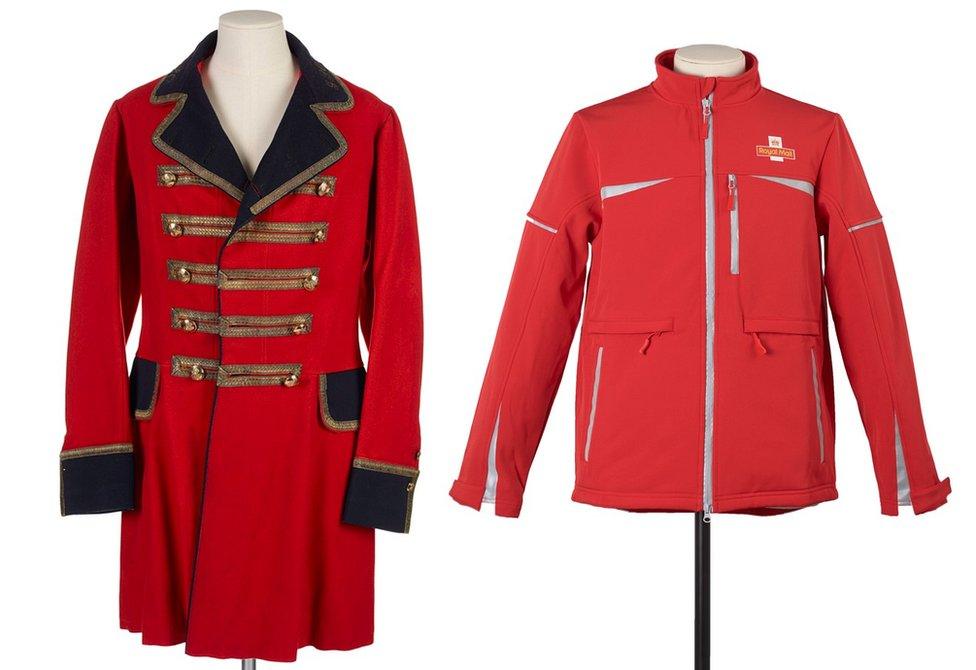
The first known uniform issued by Royal Mail (l) compared to its most recent offering
A new museum exhibition explores how uniforms worn by Britain's posties have evolved over nearly 250 years.
Dressed to Deliver, which opens at The Postal Museum in central London on Wednesday, examines how clothing has developed over time - from the buffed buttons of Victorian-wear to the all-weather uniforms worn by postal workers today.
It also looks at how aspects like world wars and issues such as uniform equality have forced new styles.
So what were some of these changes?
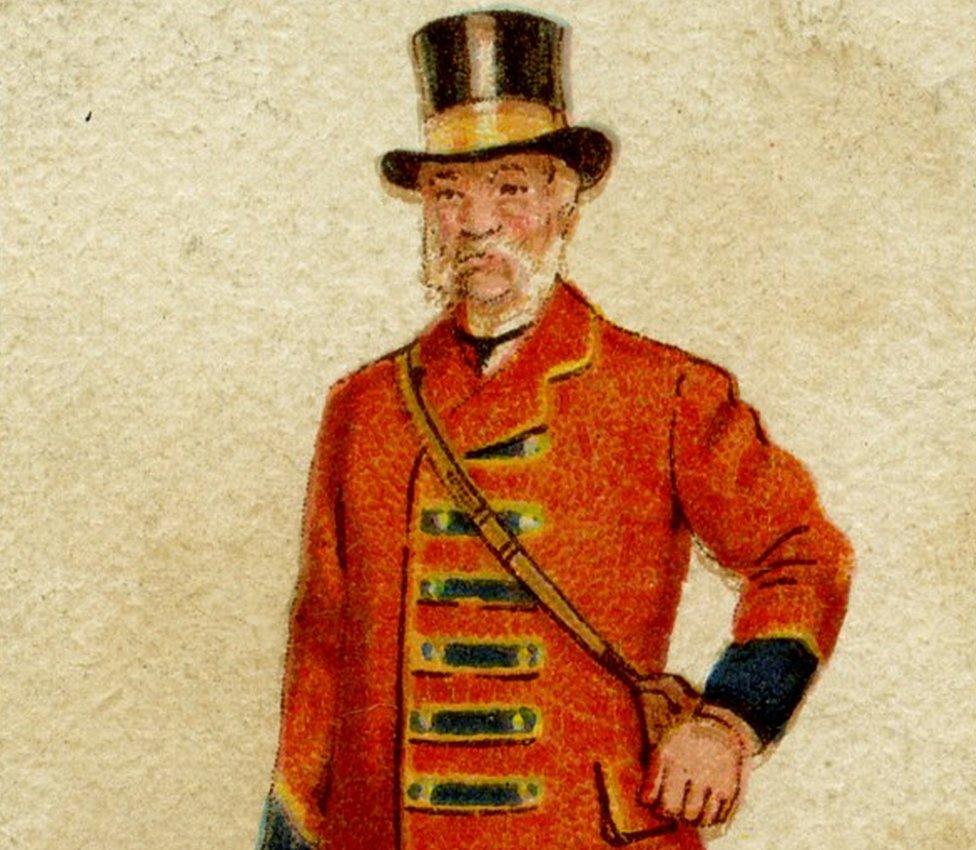
For a number of decades mail coach guards were issued with a gun to protect against highwaymen
The first known postal uniform issued by Royal Mail in Britain was one for mail coach guards in 1784.
It featured a gold braided scarlet coat with blue lapels, topped off with a black hat that had a gold band.
In the late 1700s and early 1800s, mail coach guards would also be issued with firearms to protect them from highwaymen while on duty.
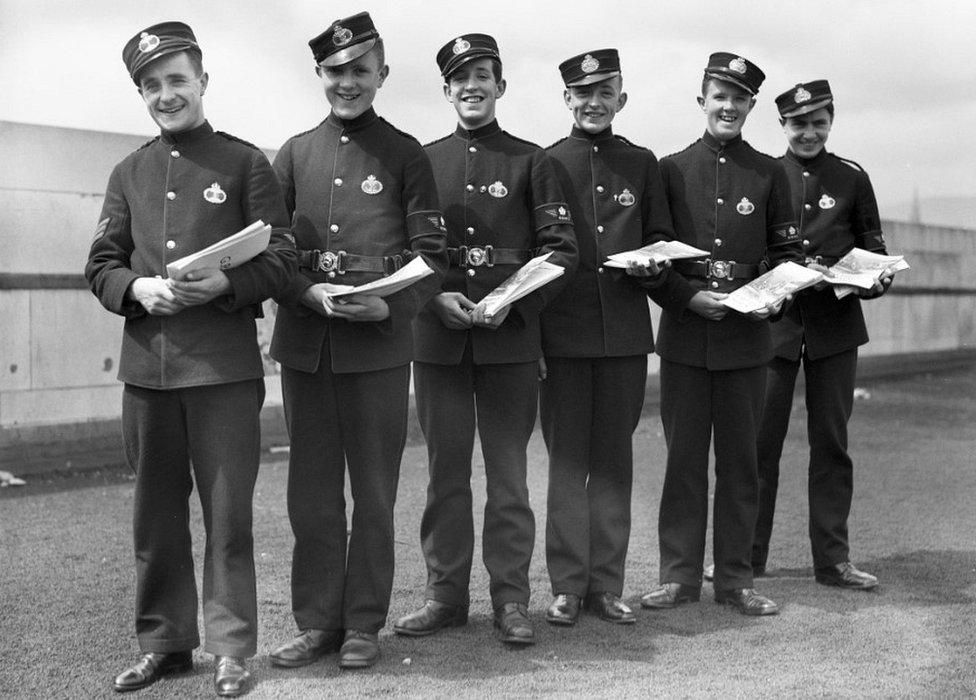
Messenger boys were allowed 12 days of holiday each year
From 1870, the Post Office took over the running of the telegraph service with boys as young as 13 working 50-hour weeks as messenger boys.
Their uniforms were similar to a postman's except they had a pillbox hat, armbands and a belt for their telegram pouch.
They were expected to follow a strict code of behaviour so they may "never bring that uniform into disrepute" and as a result had to follow rules such as:
"You must keep your hair short and neatly cut, and the practice of wearing a curl or fringe in the front must on no account be followed."
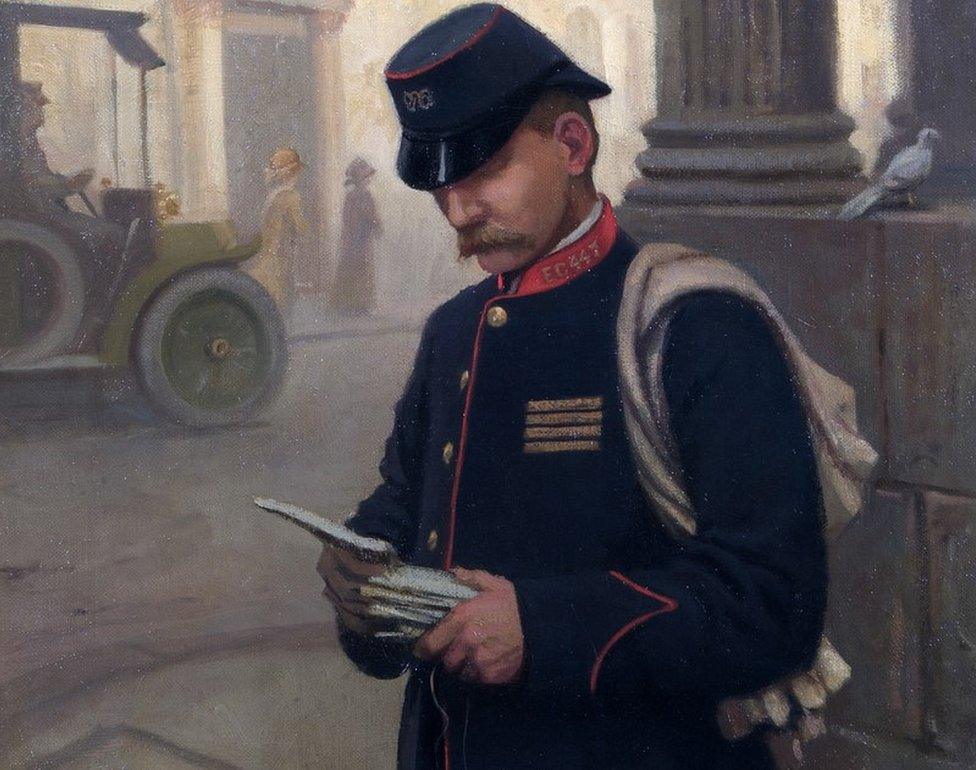
The system of stripes was abolished in 1914, partly because workers believed it led to an automatic right for incremental payment
From 1872, posties could be awarded stripes for exemplary behaviour, but they could also have them removed for poor conduct such as by being drunk on duty.
For example, in September 1902 a London postman named FH Bradley was awarded one stripe after he was accosted by two men who tried to obtain a wax impression of a key to a pillar box.
Suspecting they were up to no good, he followed them and eventually managed to get one into custody leading to the conviction of two notorious letter box thieves.

The mail van driver's slouch hat (worn by the woman on the right) was eventually stopped because it tended to get knocked off by the overhanging roof of vehicles
World War One saw thousands of women and girls being recruited into post office roles, which had been previously reserved or dominated by men.
This led to the first full uniform specifically created for women being issued, compromising of a blue skirt, coat and blue straw hat.
Young girls were also employed as messengers and were given a blue jacket and skirt similar to the standard women's uniform, but with a belt and telegram pouch.
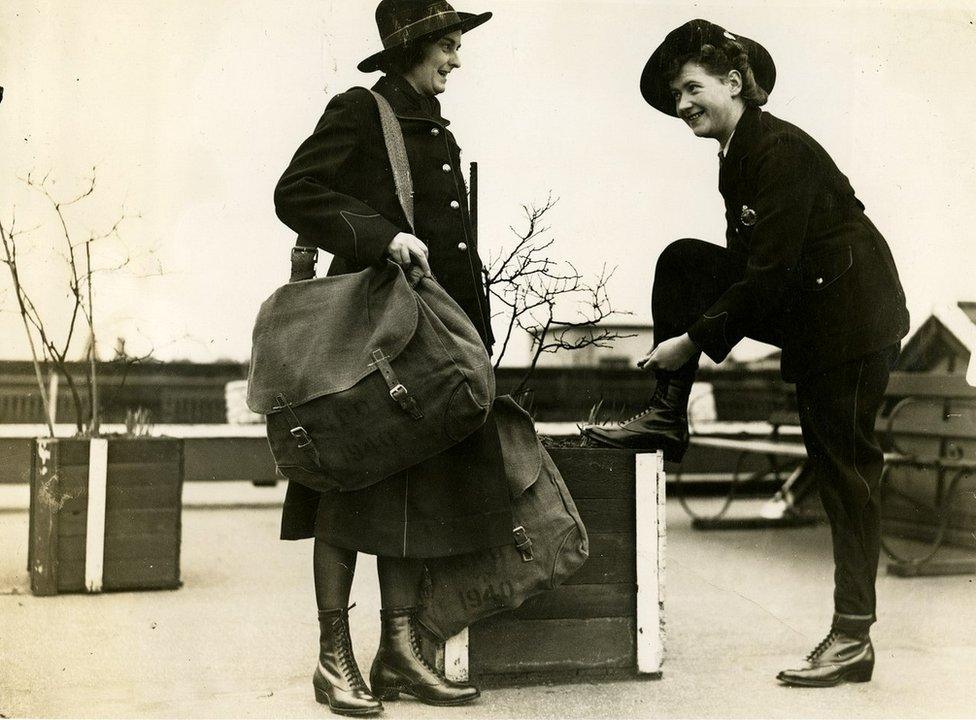
More than 500 pairs of postwomen's trousers were ordered in just two months after women were cleared to wear them
Large numbers of women also joined the General Post Office during World War Two. One of those was postwoman Jean Cameron who launched a campaign for the right to wear trousers to carry out her work.
In 1941, the change was finally authorised allowing women to choose whether to wear trousers or a skirt while on duty.
By November 1943, 14,000 pairs of "Cameron's" had been issued and speaking about her success, Ms Cameron remarked:
"I shouldn't be a woman if I wasn't pleased to be the first to start a fashion."
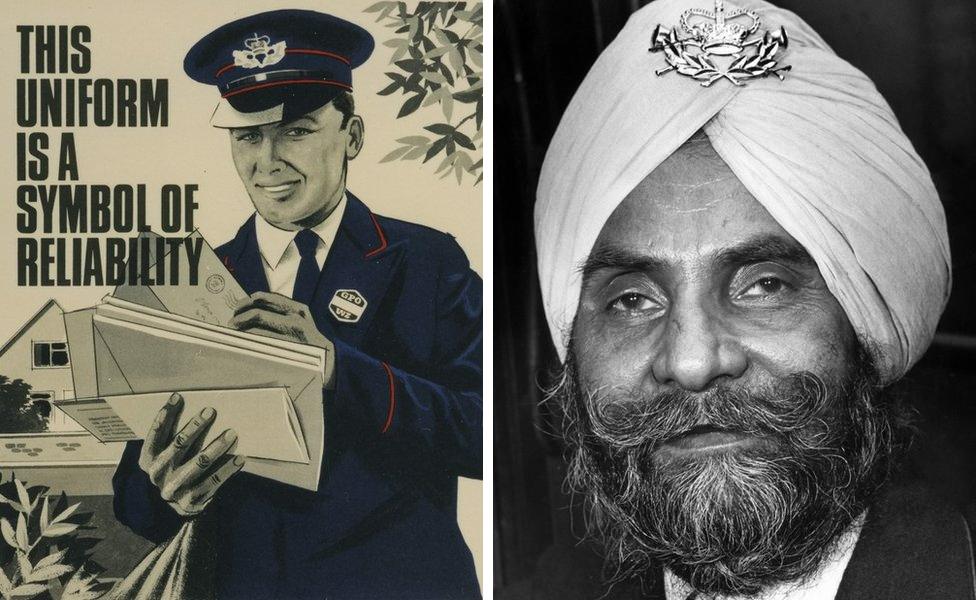
Sant Sing Shattar (r) led the way for others to wear a turban as part of their uniform, rather than a peaked cap (shown in the poster)
In the early 1960s, Sikh Brummie postman Sant Sing Shattar wrote to his bosses requesting that he be allowed to wear a turban while on duty.
This was initially turned down with security reasons being blamed, but his request was eventually granted paving the way for others to wear a navy-blue turban instead of the official blue cap.
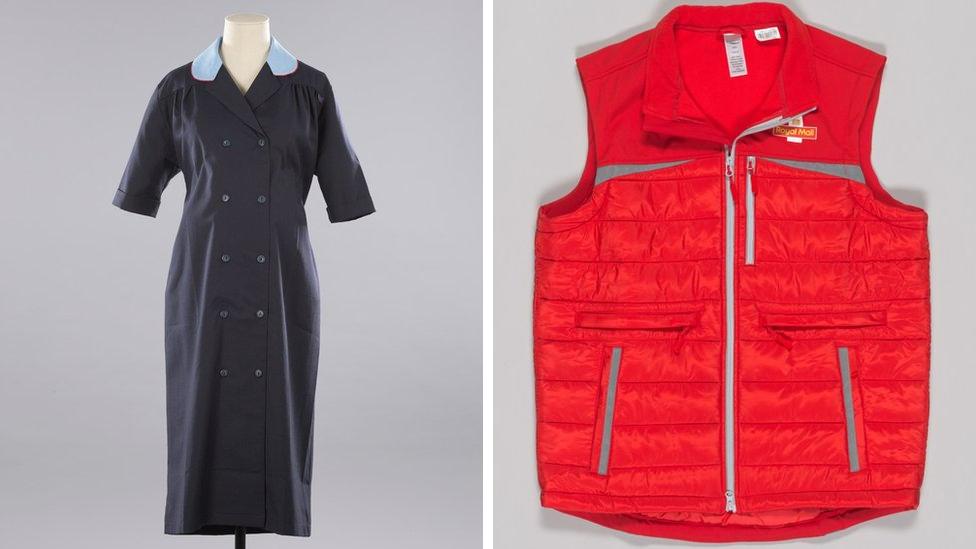
Royal Mail's first maternity dress (l) was issued in 1993 while these days postal workers can choose items like Royal Mail gilets (r)
These days, postal uniforms have been designed to be a lot more practical than those that came before.
As such, shorts, gilets and walking trousers are among the items available and are intended to aid ease of movement for those delivering post.
They also come with a "dog peg pocket" for Royal Mail staff to carry their "posting peg", which is used to help post letters through a door while keeping fingers out of reach of any angry canines.
The exhibition runs until September 2024.

Listen to the best of BBC Radio London on Sounds and follow BBC London on Facebook, external, X, external and Instagram, external. Send your story ideas to hello.bbclondon@bbc.co.uk, external
Related topics
- Published24 January 2020

- Published21 December 2017
